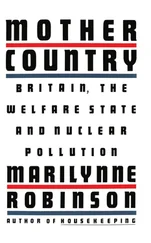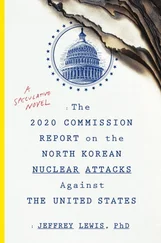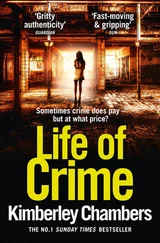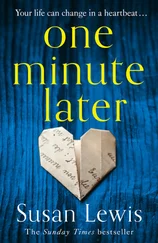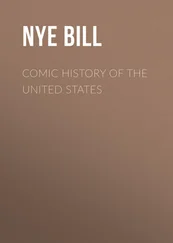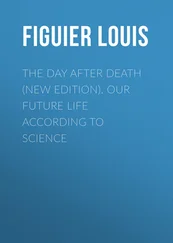The two systems thus fought among themselves and against each other. Sir George Godber, who was to become the greatest of the Chief Medical Officers the NHS has seen, helped run the 1937 survey which revealed the appalling physical state of many hospitals and the acute shortage of beds. Run down though they were, he recalled, ‘the physical difficulties imposed by unsatisfactory buildings were less important than the defects in district services resulting from competition, if not overt hostility, between the several hospitals providing them’. 19
The local authorities, who numbered several hundred, also ran a range of other health services. These included the school medical service, some home nursing, a small number of health centres, and ante- and post-natal care: most births were midwife-delivered home births, with a doctor only called if complications arose. One mother in 350 died in childbirth.
Family doctor or GP services remained based on Lloyd George’s ‘Ninepence for Fourpence’ National Health Insurance, and 43 per cent of the adult population was covered for a ‘panel’ doctor by 1938. 20Ninety per cent of GPs took at least some part in the scheme. Non-working wives and children, the self-employed, higher income earners and many of the elderly, however, remained excluded. Hospital treatment was not covered, and the Approved Societies which ran the scheme offered wide variations in ‘extra’ cover for dentistry, spectacles (which many people bought for 6d. [2.5P] at Woolworths) and sometimes some hospital care. Schoolchildren and the poor could get free treatment, subject until 1942 to the humiliating ‘family means-test’ in front of the Relieving Officer, and some queued at the ‘casualty’ or ‘dispensing’ departments of the voluntary hospitals seeking treatment for illnesses that ranged from the minor, which really needed only a GP’s attention, to the horrifyingly major.
An Aberdeen woman quoted in Margaret Whitehead’s compilation of pre-NHS memories, recalls getting rheumatic fever on top of scarlet fever when her mother took her to the dispensary because they could not afford a doctor. ‘I took scarlet fever … and I was ill for a few days and my mother took me to the dispensary. We had to walk to the dispensary because it was free there, we couldn’t afford to pull in a doctor. ‘Cos my mother would have had the doctor in the house maybe … well, at least twice a week, ’cos she had eight of us. And you know what it is, there’s always something wrong with one. And it had to be serious before she took in a doctor because she couldn’t afford to pay for it.’ 21
Some GPs only saw their panel patients at lock-up surgeries, receiving private patients in their homes; others took the private patients through the front door, the panel being relegated to a side ‘surgery’ door. As with the voluntary hospitals, the need to supplement panel income with private practice concentrated family doctors’ services more heavily in wealthier areas. But even for the middle classes and for those who were not poor, doctors’ fees with the cost of medicine on top could be crippling, not to mention the possibility of hospital bills. Muriel Smith of Chelmsford recalled:
We were married in October 1937 and if we ever needed to see the doctor, the fee was one guinea … we had to be really ill to consider facing up to this. The men did if they were not well enough to go to work, but the women very rarely bothered. My weekly household money was one pound and my husband’s total salary was three pounds. When my son was born in 1946, the bill for the nursing home was £22 and the ambulance came to £1 5s. It is quite remarkable the difference between those long ago days and the ease with which we were able to cope with my husband’s illnesses after the war – a hernia operation, piles operation, three weeks in hospital after a slight heart attack and constant free care from then until his second heart attack three years later, when he died in Guy’s. 22
Of course, many GPs played Robin Hood, waiving fees when they could, for the poor and for the middle class. My mother remembers her rather austere family doctor in Hull in 1947 refusing to send a bill for treating a recurrent bout of the malaria my father (by then a Methodist minister) had acquired as an infantryman in Burma. ‘I don’t charge the cloth,’ he said, explaining that in return GPs referred to the church those who needed pastoral not medical care. But there were limits to such charity and inter-profession trading. Many GPs outside the more prosperous private patient areas were far from well off. Nationally only about one-third of GPs’ income came from panel patients. 23They supplemented panel income with work in municipal hospitals, or for factory owners, or occupational health work under the eagle eye of the local authority medical officer whose punitive attitude to payment and control helps explain the doctors’ deep distrust of either a local authority-run service or any suggestion that they should be forced to become ‘civil servants’ employed by the state.
Against this background, it is hardly surprising there was a powerful movement for reform. Beatrice Webb is usually credited, in her minority report of 1909 to the Royal Commission on the Poor Law, with the first call for a ‘public medical service’ or ‘state medical service’, but much else had happened before Bevan took office. To highlight just some of the many streams which combined into the flood that made a national health service inevitable, 1920 saw a committee established by the Ministry of Health under Lord Dawson which argued that ‘the best means of maintaining health and curing disease should be made available to all citizens.’ In 1926 a Royal Commission foreshadowed a tax-funded NHS by observing that ‘the ultimate solution will lie, we think, in the direction of divorcing the medical service entirely from the insurance system and recognising it along with all other public health activities as a service to be supported from the general public funds’. 24
By 1930 the British Medical Association was backing ‘a general medical service for the nation’ though on the basis of extending national insurance to include hospital care. Rather surprisingly, the BMA foresaw the whole being managed by the larger local authorities. 25In 1933 the Socialist Medical Association was seeking a comprehensive, free and salaried medical service run by local government and in 1934 this became the official policy of a Labour Party crippled by the split over Ramsay Macdonald’s National Government.
The growing importance of local government services reinforced the perception that insurance no longer provided the answer, and by 1938 the planning of the Emergency Medical Service was turning Ministry of Health minds to how a permanent national health service might be created. Less than three weeks after the outbreak of war, Sir Arthur MacNalty, the Ministry of Health’s Chief Medical Officer, offered a counter to a paper by Sir John Maude, the Ministry’s deputy secretary. Sir John had foreseen either ‘the gradual extension of National Health Insurance to further classes of the community and by new statutory benefits, or the gradual development of local authority services’. MacNalty provided a third option – that the hospitals should be administered ‘as a National Hospital Service by the Ministry’. Such a system was already practically established through the Emergency Medical Service, he argued. It would be ‘difficult and in many cases impossible for voluntary hospitals to carry on, owing to the high costs of modern hospital treatment and the falling off of voluntary subscriptions after the war’. He judged that the voluntary hospitals and local authorities would resist, as might the medical profession, ‘but I am certain they [the doctors] would, for the most part, welcome national control in preference to being controlled by local authorities’. It was, he suggested, ‘a revolutionary change, but it is one that must inevitably come’. 26
Читать дальше
![Nicholas Timmins The Five Giants [New Edition]: A Biography of the Welfare State обложка книги](/books/701739/nicholas-timmins-the-five-giants-new-edition-a-cover.webp)
